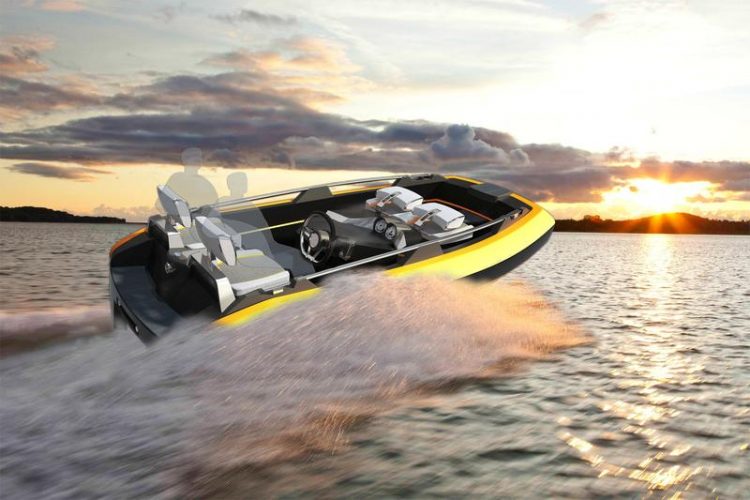Novel Material for Shipbuilding

For the construction of leisure boats the new compound material will be used. Krake Catamarane
The project is set up in an international cooperation with Professor Anders Biel from Karlstad University in Sweden and the Swedish company Lamera from Gothenburg, which develops the novel material.
The project contributions of the THM are funded by the German Federal Ministry for Economic Affairs and Energy in the framework of the program „Central Innovation Programme for small and medium-sized enterprises (SMEs)“.
In modern shipbuilding duroplasts, for instance glass fibre reinforced plastics, are widely used to fabricate structural parts. Such a material is of low density and shows huge dimensional stability, but it also has a number of disadvantages: it is very brittle, it is difficult to recycle, and the manufacturing process is quite energy-consuming. Stainless steel, which represents an established alternative, is heavy and thus causes large fuel consumption.
Therefore, the project partners intend to manufacture the outer skin of boats from a novel material. „Hybrix“ is a novel composite material, which has been developed by the Swedish project partner Lamera. It consists of a microfibre core, two outer metal layers and two adhesive layers.
Compared to a classical solution using exclusively steel, this novel material reduces the weight of the ship hull to about 75%, while featuring comparable structural properties.In addition, the novel material shows excellent heat and damping properties and in contrast to plastics it is non-flammable.
An optimization of Hybrix considering the particular requirements in shipbuilding is one of the main goals of the project. The mechanical properties of a structure consisting of such metal composite will be simulated and experimentally verified.
Finally, the influence of environmental conditions like salt water, sun irradiation or wind on the material will be subject of research. At the end of the project it is intended to manufacture two prototypes, which shall be leisure boats made of Hybrix, to demonstrate all technical improvements acchieved in the project.
The duration of the research project will be two years.It is funded by the German Federal Ministry for Economic Affairs and Energy and by Vinnova (Sweden's Innovation Agency) with a total amount of 675.000 €.
stephan.marzi@me.thm.de
Media Contact
More Information:
http://www.th-mittelhessen.de/site/All latest news from the category: Materials Sciences
Materials management deals with the research, development, manufacturing and processing of raw and industrial materials. Key aspects here are biological and medical issues, which play an increasingly important role in this field.
innovations-report offers in-depth articles related to the development and application of materials and the structure and properties of new materials.
Newest articles

A universal framework for spatial biology
SpatialData is a freely accessible tool to unify and integrate data from different omics technologies accounting for spatial information, which can provide holistic insights into health and disease. Biological processes…

How complex biological processes arise
A $20 million grant from the U.S. National Science Foundation (NSF) will support the establishment and operation of the National Synthesis Center for Emergence in the Molecular and Cellular Sciences (NCEMS) at…

Airborne single-photon lidar system achieves high-resolution 3D imaging
Compact, low-power system opens doors for photon-efficient drone and satellite-based environmental monitoring and mapping. Researchers have developed a compact and lightweight single-photon airborne lidar system that can acquire high-resolution 3D…





















